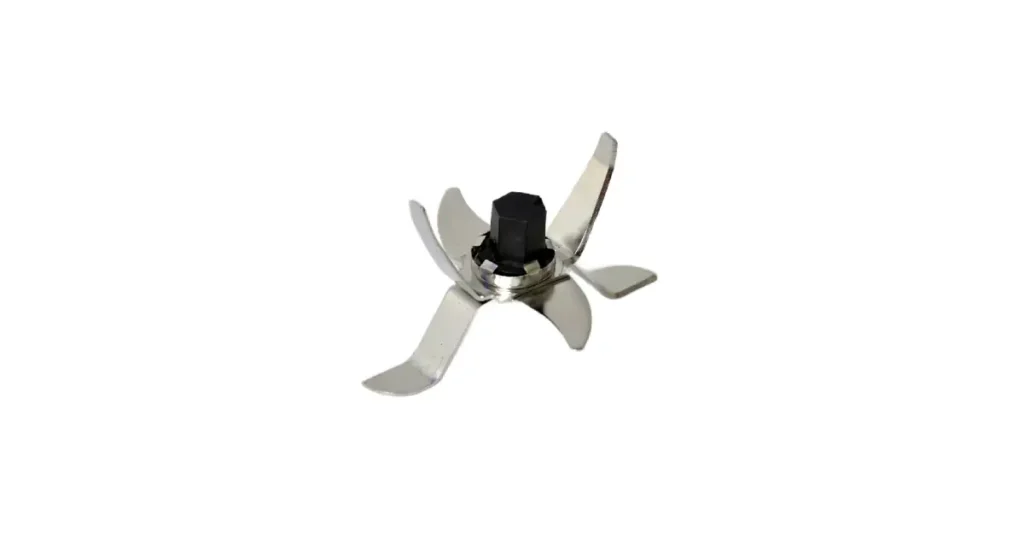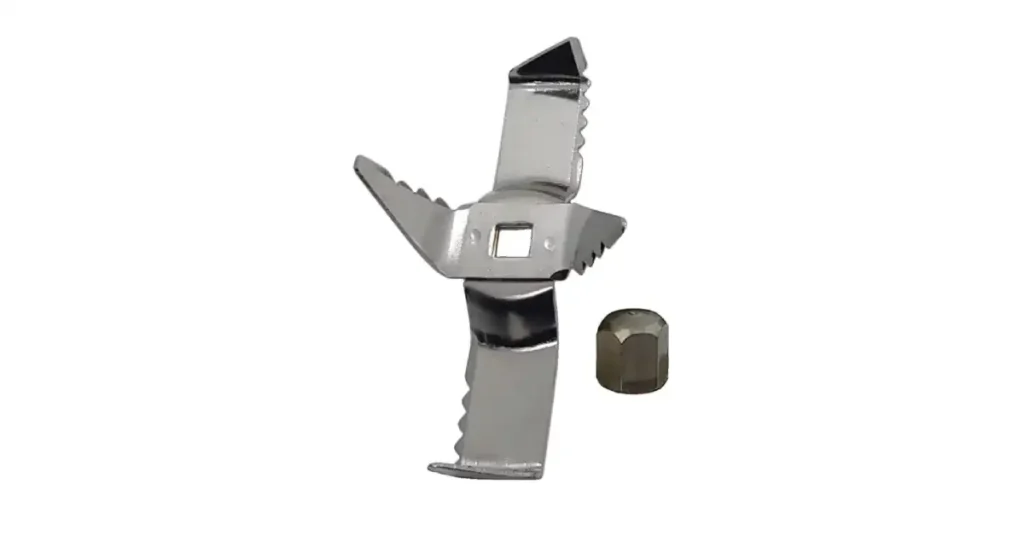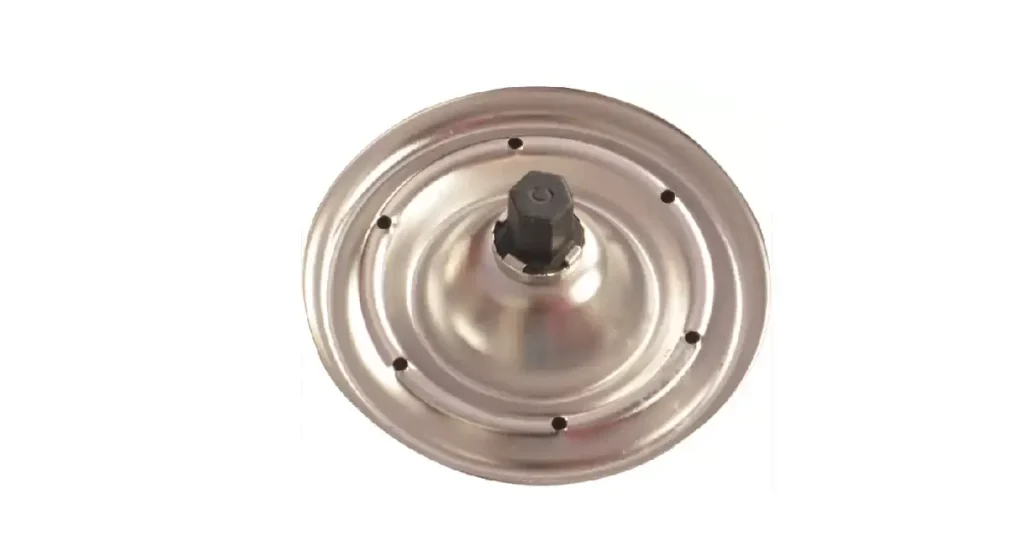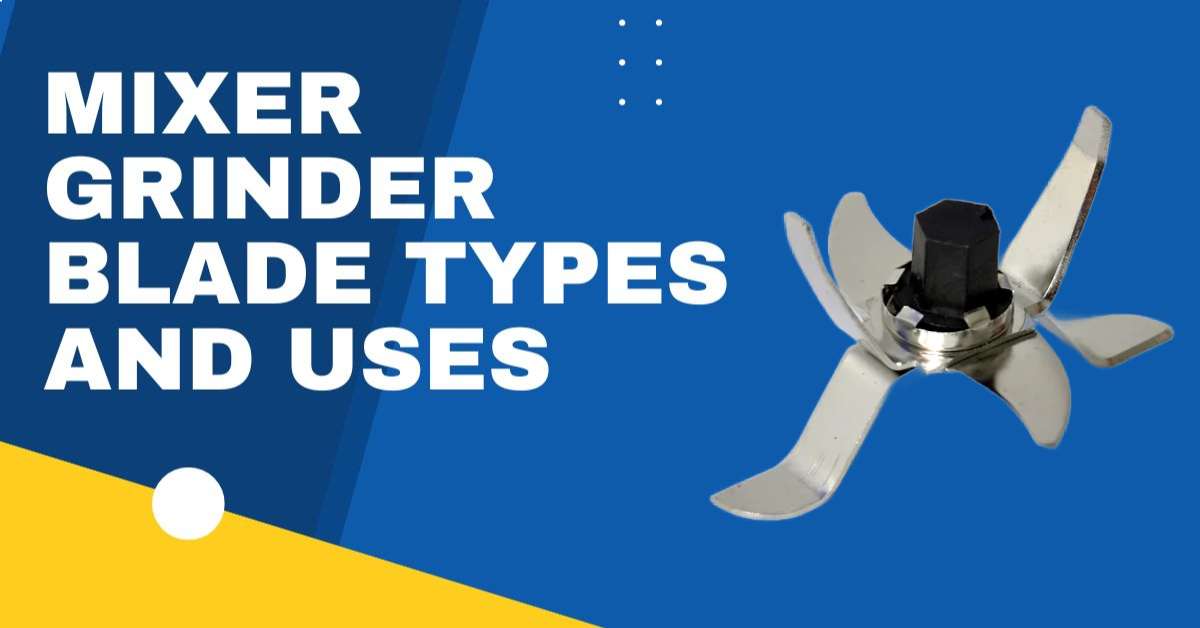A mixer grinder is a must-have tool for modern kitchens as it simplifies and speeds up the process of food preparation in today’s fast-paced kitchens.
This all-encompassing guide will take you through Mixer Grinder Blade Types and Uses, helping you maximize your appliance.
Understanding exactly what each blade does will make any culinary activity easier for you.
The right blade can make all the difference between grinding spices, making chutneys, or blending smoothies, among other things.
These flexible blades are explored in detail, showing you how their uses can bring greater heights to your cooking experience.
You will know how to use your mixer grinder effectively by taking advantage of expert insights and practical tips.
What is a Mixer Grinder?
A mixer grinder combines both functions of a mixer and a grinder, hence being an essential appliance that every kitchen should have.
It is made for mixing, blending, and grinding different ingredients, thus becoming an indispensable tool in today’s kitchens.
Mixer grinders come with multiple blades and powerful motors, including the different blades of mixer grinders, which enable them to perform myriad tasks that range from grinding spices and making pastes to smoothie blending and cream whipping alike.
Essential Role in Food Preparation.
By consuming less of your time and simplifying various cooking processes, a mixer grinder is of great importance in food preparation.
Instead of manually grinding spices with a mortar and pestle or blending ingredients by hand, you can achieve smooth, consistent results in a fraction of the time.
#1. Grinding spices:
It is good for fresh, fragrant spice mixes.
#2. Making pastes:
Excellent for making ginger-garlic paste, curry pastes, and more. Great when you are on a shake diet.
#3. Blending ingredients:
Great when you are on a shake diet: You can enjoy the fruits blended into juice form.
#4. Mixing batters:
The best batter for dosa, idli, and cake batters with this appliance.
What are the common mixer grinder blade types and uses?
#1. Wet Grinding Blade.

A wet grinding blade is what you need for your mixer grinder if you want to make smooth, thick batters and pastes suitable for traditional dishes. Its function is to grind wet ingredients to the right consistency.
Description and Features.
- Specially Designed for Wet Ingredients: This blade is perfect for grinding soaked rice and lentils.
- Smooth and Consistent Results: Guarantees a smooth, lump-free batter or paste.
- Durable and Efficient: Made from strong materials that can withstand heavy-duty grinding without overheating.
- Optimal Speed: It runs well at moderate speeds (1000-1500 RPM) and gives a good texture.
Ideal Foods and Recipes.
- Idli Batter: Produces soft, fluffy batter necessary for making spongy idlis.
- Dosa Batter: Also produces fine and consistent batter that makes crispy golden dosas.
- Coconut Chutney: Grinds coconut and spices into a smooth paste, which can be used to make chutney tastier.
- Wet Masala Pastes: Ideal for making wet herbs like curry leaves into a smooth paste while preparing curries or sauces.
Also read: Best Bajaj Mixer Grinder 750 Watt In India.
#2. Dry Grinding Blade.

You should know that the dry grinding blade in your mixer grinder was designed to crush hard, dry items which then turn into powder or granules as per your preference.
This blade is perfect for grinding spices, grains, and nuts; therefore, it is an essential kitchen gadget that every home must have.
Description and Features
- Sturdy and Sharp: Its main purpose was to produce fine powders or granules out of hard dry pieces of stuff.
- High-Speed Operation: Allows even distribution of heat during the grinding process.
- Fine Texture: Consequently it helps in achieving a smooth and fine texture required by many recipes.
- Durable Design: Created with the strength to withstand the grinding of hard ingredients.
Ideal Foods and Recipes
- Spices: It is ideal for making fine powders from whole spices like cumin, coriander, and black pepper. Your food will taste better when you use freshly milled spices.
- Grains: These grinders can be used to make flour out of rice, wheat, and oats among other grains. Homemade flours are more nutritious and fresher than the ones bought in shops.
- Nuts: Ideal machine for converting almonds and cashews into fine powders or pastes, which can be mixed with baking and cooking recipes.
Also read Crompton AMEO Pro: Savor The Secrets Of Fine Taste Revealed.
#3. Chutney Blade.

In your mixer grinder, there is a chutney blade that has been specially designed to produce smooth, flavorful pastes and chutneys when a small quantity of them is needed.
If you love creating your fresh homemade condiment then this product should not be missed on your kitchen gadgetry list as it is fundamental in its production process.
Description and Features.
- Compact and Precise: For processing chutneys and pastes, it has been created as it takes care of small quantities being handled at once, only while doing so very well at the same time.
- Sharp and Efficient: Grinds quickly until a fine texture is achieved on the ingredients.
- Versatile Use: This grinder can handle various things such as herbs, spices, nuts, and coconut, among others.
- Durable Construction: It was built knowing that it would be utilized repeatedly without a decrease in sharpness as such preventing any dulling issues whatsoever even after using it regularly every day.
Ideal Foods and Recipes
- Mint Chutney: Fresh mint leaves, cilantro, and spices are easily ground into a tangy, vibrant chutney.
- Coconut Chutney: The creamy paste had coconut, green chilies, and herbs blended smoothly.
- Peanut Chutney: It works best with roasted peanuts and spices, where you can come up with a flavorful roast peanut’s nutty sauce.
- Ginger-Garlic Paste: Fresh ginger and garlic are quickly ground into a smooth paste that is essential in many Indian meals.
Also read: Top 5 Mixer Grinder 750 Watts In India.
#4. Mincing Blade.

The mincing blade on your mixie is meant for finely chopping or mincing ingredients, and it thus makes it perfect for preparing a variety of recipes requiring finely minced texture.
It’s a blade to simplify work that would need a lot of manual effort otherwise.
Description and Features
- Sharp and Efficient: Designed to mince ingredients quickly and uniformly until they reach the desired fineness.
- Versatile: It can handle both soft and hard items too.
- Durable Construction: Its material is strong enough to make it last longer even if used daily.
- Optimal Speed: Works at various speeds, unlike most others, to accommodate different mixer blade types and foods that will require grinding them into very small sizes as they demand, hence no need to alter them so much as this grinder will still handle the task despite its settings.
Ideal Foods and Recipes
- Meat: This one is good when you want to chop meat ready for patties, balls, and kebabs at home, among others.
- Vegetables: You can use them whenever you want to chop onions, garlic, or herbs into such fine pieces for soups, stews, or sauce-making processes, respectively.
- Nuts: If you do not have an electric nut chopper, then mixie comes in handy while trying to chop some nuts, either for baking purposes or just putting them on top of your food after cooking has been done
- Stuffings: It helps in making finely chopped fillings used in stuffing vegetables with stuffing or even pastries.
Also read: How To Fix Your Mixer Grinder Overload Switch Not Working Without Professional Help.
#5. Whipping Blade.

To make recipes that are light and fluffy, the whipping blade for mixer grinder is designed to aerate ingredients.
If you want a consistency similar to that of whipped cream or smooth batter, this blade will help you get it without much effort.
Description and Features
- Aeration: When making recipes like angel food cake, where getting air into the mixture is crucial for its success, this is the best option.
- Sharp and Fast: Fast transition times between liquid and solid states without overworking, yet achieving a desired consistency.
- Versatile Use: It can be used to prepare various things, such as cream or egg mixture, etc.
- Durable Design: Designed with durability in mind so that it can deliver consistently good outcomes over time.
Ideal Foods and Recipes
- Whipped Cream: To make delicious desserts with their perfectly aerated whipped creams on top of them, there is no better tool than this one.
- Egg Whites: This type of stuff would have made her meringues and cakes stiff when she wanted to beat some egg whites until they were that way.
- Smoothies: Suitable for making thin pulpy smoothies that are not heavy on your stomach; help you avoid adding extra weight while still enjoying drinks meant for losing calories.
- Cake Batter: A perfect remedy when whipping up cake batters, aiming at ensuring their uniformity and lightness, thereby resulting in tender cakes that are not packed down by gravity’s pull.
Types of mixer grinder and Speed Range.
| Blade Name | Quantity Min | Quantity Max | Speed Range |
|---|---|---|---|
| Wet Grinding Blade | 250 gms. | 400 gms. | 1 – 2 speed |
| Dry Grinding Blade | 50 gms. | 300 gms. | 1- 3 speed |
| Chutney Blade | 100 gms. | 600 gms. | 1 speed |
| Mincing Blade | 200 gms. | 400 gms. | 1 – 2 speed |
| Whipping Blade | 500 ml. | 1 litre. | 1 speed |
Note: Speed 1 is (5,000 to 10,000 RPM), Speed 2 is (8,000 to 15,000 RPM), and Speed 3 is (10,000 to 20,000 RPM). Household mixer grinders have an RPM ranging from 18,000 to 22,000.
How do you choose the right blade for your needs?
Your kitchen needs an appropriate blade if you want great results from your mixer grinder.
Here are some helpful suggestions for selecting the right blade depending on what tasks need to be done and why material plus construction techniques matter too much about a blade’s performance.
#1. Practical Tips for Selecting the Correct Blade.
- Identify the Task: Decide what you require to do, such as grinding spices, making chutneys, mincing meat, or whipping cream.
- Consider the Quantity: For small quantities of things like chutney or pastes, use the chutney blade. If you are preparing large amounts of batter or ground spices, then either wet grinding or dry grinding blades would be best.
- Check Compatibility: Ensure that your mixer grinder model is compatible with this blade. Not all grinders take all blades, so please check properly before buying.
#2. Importance of Blade Material and Design.
#1. Material: The type of blade used determines its longevity and performance.
- Stainless Steel: Stainless steel is commonly used in many mixer grinders because it’s strong, anti-rusting, and remains sharp for long periods.
- Titanium-Coated: Some high-end blades come with a titanium coating, which makes them more durable and increases their sharpness as well.
#2. Design: How efficiently it can perform its task is influenced by the design of the blade.
- Shape and Angles: Blades made for specific tasks have different shapes and angles. For instance, the wet grinding blade has an angle that is good for heavy batters, while the whipping one incorporates more air into it during the beating process.
- Number of Blades: Having more blades can give a finer grind or a smoother paste, but they also cause additional resistance, requiring a powerful motor.
What are some maintenance tips for mixer grinder blades?
To ensure that your blender blades remain sharp, effective, and safe for use, it is necessary to maintain them properly.
Here are detailed instructions on how to clean and maintenance for the blades as well as common hitches and ways of fixing them.
#1. Cleaning Tips
#1. Regular Cleaning:
Avoid letting any food residue on the edges dry out or stick after each use.
- Use Warm Water: In warm, soapy water, rinse off the stuck-on particles from the edges.
- Soft Brush: Softly brush or gently squeeze a blade with an old toothbrush, targeting hard-to-reach areas.
#2. Deep Cleaning:
Do a thorough cleaning once per week.
- Vinegar Solution: For half an hour, soak the blades in a mixture of equal parts vinegar and water to remove any stubborn stains or odors.
- Baking Soda Paste: Apply a solution of baking soda mixed with water onto the blades and wipe gently until all persistent dirt is cleaned out.
#3. Dry Thoroughly:
After washing, let these blades dry completely using another clean cloth to prevent rusting.
#4. Avoid the Dishwasher:
Handwashing is preferable because dishwashers may reduce sharpness over time.
#5. Regular Inspection: Examine the blades periodically, looking out for wear, damage, or rusting marks.
#2. Maintenance Tips.
- Replace When Needed: You should replace dull, chipped, or rusty ones so that your machine can work efficiently again.
- Proper Storage: To avoid rust and damage, keep the blades in a clean, dry place.
- Blade Guards: Use blade guards or wrap them in a clean cloth to protect them and prevent any accidents.
- Lubricate Occasionally: Occasionally lubricate the blade assembly (not the blades themselves) to ensure smooth performance.
- Food-Safe Lubricant: Use a food-safe lubricant so as not to contaminate your food.
#3. Common Issues and Troubleshooting Tips.
#1. Dull Blades: Over time, their efficiency decreases as they lose their sharpness.
- Solution: If sharpening does not work, sharpen the blades with a blade sharpening tool or replace them completely.
#2. Rust Formation: Rust can occur if, after cleaning, the blades are not dried correctly.
- Solution: Vinegar can be used to remove rust by soaking it into the blade part of these kinds of tools. To prevent the formation of rust after each wash, let it dry completely.
#3. Blades Not Rotating Properly: At times, you will realize that some blades do not move smoothly or get stuck.
- Solution: Check for any food particles stuck in the blade assembly. Clean the assembly thoroughly, making sure it is well-oiled.
#4. Unusual Noises: Unusual noises being emitted by your mixer grinder might indicate an issue with either its blades or motor.
- Solution: Inspect whether there are signs of damage on such things as blades. If you find out that everything is alright with those, but the motor seems suspicious, then contacting an expert would be appropriate here.
FAQs
What are the different types of mixing blades?
Mixer grinders come with various kinds of blades, each for specific tasks:
1. Wet Grinding Blade: For making idlis and dosa batters.
2. Dry Grinding Blade: or grinding spices, grains, or nuts.
3. Chutney Blade: Used to make chutneys and small amounts of pastes.
4. Mincing Blade: This is used to chop meat, vegetables, or nuts very finely.
5. Whipping Blade: To beat eggs, whip cream, and make smoothies.
Which blade is used for chutney?
The Chutney blade is specially designed for making chutneys and small quantities of pastes. It grinds ingredients into a smooth, fine consistency, thus making fresh-tasting, tangy chutneys possible.
What is a dry grinding blade used for?
Grinding difficult ingredients that are dry is what the dry-grinding blade does. Making fine powders from grains, nuts, and spices is its specialty because it ensures freshly ground ingredients for all your recipes.
Which blade is used for blending?
For blending purposes such as purees, smoothies, and batters, the wet-grinding blade is usually used. It properly blends wet ingredients to an even texture every time. A whipping blade in a mixer grinder is used to whip or aerate ingredients like cream or egg whites, etc.
Conclusion
To optimize your kitchen operations, it is important to understand the different types of mixer grinder blade types and uses.
The wet grinding, dry grinding, chutney, mincing, and whipping ones were discussed with their specific functions highlighted.
For the best results and efficiency in your cooking, choose a mixer grinder with blades suited to your cooking needs.
Tell us about your experiences or tips, too, in the comments below, and explore our other articles for more information.










